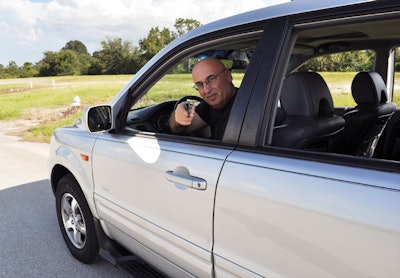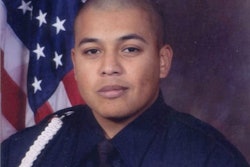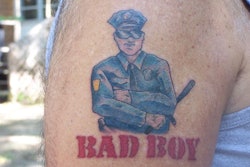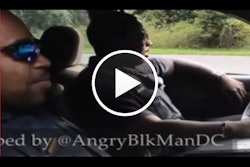 Photo courtesy of Amaury Murgado.
Photo courtesy of Amaury Murgado.
During my more than 25-year career in law enforcement, there has been a great deal of conversation and debate over officer safety during traffic stops. Who hasn't heard the axiom that there is no such thing as a routine traffic stop? And yet, law enforcement officers keep getting hurt or killed while conducting them. If you go to the FBI's Website and look at its statistics on Law Enforcement Officers Killed and Assaulted (LEOKA), you'll find the risk to be very real. Between 2001 and 2010, 95 officers died during traffic stops, while 4,752 were assaulted.
It's time to adjust our focus away from the axiom about what is and isn't routine. What we actually need is to change our methodological paradigm. This change should focus on mitigating risk and taking the word routine out of any future conversation.
Change the Focus
In order to mitigate any risk, you have to identify and define the risk in the first place. Experience teaches that there is nothing routine about what we do once we hit the streets. Traffic stops are no exception. A traffic stop generally has two threat levels; you are either at risk or at high risk.
A traffic stop is always an at-risk situation because you never know who is in the vehicle and what an occupant's intentions are. You also don't know what's inside the vehicle and how it can be used against you. High-risk traffic stops are ones where you already know the suspect's intentions. The person is already guilty of a felony crime and or trying to escape capture from one. High-risk stops involve some type of take down usually in the form of a predetermined felony stop.
It is logical to assume that if we change our focus, we need to also change our attitude and methodology to fit our new focus. In order to improve our procedures and tactics during traffic stops, we need to look no further than using some common sense.
Radio Procedure
One of my pet peeves is when an officer calls in a traffic stop after having already stopped the vehicle. I have never understood why these types don't understand that if the stop were to go south, no one would know where they were. Unless the tactical situation demands otherwise, it's imperative that the officer involved in a traffic stop radio the information in before he or she stops the vehicle.
It's a simple transmission employing basic information. It's easy to remember what information you need by thinking in terms of the mnemonic TLC: tag, location, and color (of vehicle). As a general rule, I would also include the number of occupants in the transmission to keep your zone partners aware of what’s going on, especially at night. On the flip side, just because you did call it in doesn't mean that your dispatch center can assume everything is fine and they can wait for you to clear the call before talking with you again. Dispatch needs to check on you periodically and keep your status updated. Patrol and dispatch work hand in hand, and you should never break that partnership for expediency's (or laziness') sake.
Stop Location
A familiar operational principle is to be intimately familiar with your patrol area. You should be aware of traffic patterns, ongoing construction, and where the best lighting is. Having that knowledge is essential so you can choose a good location for your traffic stop.
It’s a given that there will be times when your final stop is forced upon you because of driving conditions or the driver's actions. That being said, if the spot is not tactically sound, or otherwise conducive to a safe stop, there is nothing to hinder you from making adjustments. Don't ever feel you have to accept your current position if you don’t like it. Shy of an exigent circumstance, take your time and make every effort to insert yourself into the best tactical situation you can create. If the driver doesn't cooperate or drives off, then you know you have something bigger going on and you can react accordingly. Check your ego at home before you go on shift so you can make it home after your shift.
Location also means being cognizant of passing traffic. Get out of your vehicle as safely as possible. Remember to do all of your enforcement business from the non-traffic side of the road. Make sure you have a good separation between your patrol car and the violator's. Never do your business in between them. In today's world of distracted drivers, it's no longer just the drunk driver you have to worry about crashing into you. It seems every time you turn around, someone is talking on their phone, texting, or fumbling around for something they dropped.
Get the Driver Out
Whether to get the driver out of the car is probably one of the most contested tactics during a traffic stop. It’s a black-or-white issue for some and each side will rattle off a list of reasons for his or her preferred method. I am of the opinion that it's safer to get the driver out of the vehicle and conduct your business off to the side. If you let the driver stay in his vehicle, he’s on his home turf. He is familiar with this environment and has all of his resources available to him. If you get him out of his vehicle, you change the driver’s environment and effectively deny him the use of anything in that vehicle that could hurt you.
The truth is there is no safe way to approach a vehicle. Even a passenger-side approach reduces your effectiveness if there are passengers present. Remembering that distance and cover are your friends, initially walking up to the vehicle leaves you without either advantage. Put the violator at a disadvantage first and then approach. That way you have more control over the situation. Obviously at some point, everyone has to go to the vehicle, but it should be more on your terms than the violator's.
The other way officers get hurt is if they don't control the passengers. If you are already using your car for cover and you are doing your business on the non-traffic side, it will make it that much harder for someone still in the car to hurt you. There is far too much evidence showing how officers get hurt to continue doing business as usual. If there is any doubt about the occupant's intentions, call for backup. Let your cover officer help you as you deal with the situation, one step at a time.
If you are fortunate enough to have a cover officer assist you, have her focus on cover officer duties and nothing else. Cover officers don't help you search, they don't run warrants, and they don’t take phone calls. A cover officer's primary duty is security…your security while you're busy handling the mechanics of the traffic stop. If you don't have any backup available, continue to use your environment, distance, and cover to your advantage. If you don't, the bad guy most certainly will.
Be in the Moment
Officers miss things all the time because they forget to be in the moment. If the stop is already over in your mind because you are focusing on giving the driver a citation, you will certainly miss out on observing officer safety cues or at a minimum other enforcement opportunities. Far too many officers start their conversation with license and registration please and walk away to start writing. In order to be in the moment, you need to break down the stop into segments and deal with things one at a time. Every stop has a beginning, middle, and end. You need to slow down, be observant, and take the time to engage the driver. You also need to be aware of your environment as you do.
Many officers get in a hurry. Don't forget that every traffic stop is an investigation and, as with every investigation, you need to dig deep. Introduce yourself, explain why you stopped the driver, and don’t be afraid to ask questions. If things don’t add up, you know you're on to something.
Entering the Unknown
Anyone involved with traffic stops should focus on mitigating risk rather than trying to decide what is and isn't routine. A traffic stop could very well end up being a simple matter or it could end up in a felony stop. The fact remains that you never know what you have at the onset of your traffic stop because you are stepping into the unknown. The majority of traffic stops end well so it's not a question of being paranoid. Instead, it's about being prepared for the ones that don’t end well and staying out of the FBI's next LEOKA report.
Amaury Murgado is a special operations lieutenant with the Osceola County (Fla.) Sheriff's Office. He is a retired master sergeant from the Army Reserve, has more than 25 years of law enforcement experience, and has been a lifelong student of martial arts.















